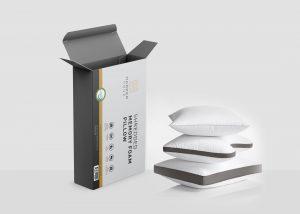How to Fix QuickBooks Error Code 6000 832 Related to Company File
How to Resolve QuickBooks Premier Error 6000, 832

The QuickBooks error code 6000 832 is an organization record goofs that plague your machine while you in all actuality do never again have adequate consent to advantage get passage to any QuickBooks archives or envelopes. Also, this mistake is one of the most ordinary anyway fundamental Errors inside the QuickBooks programming program. Whenever impacted by it, the QuickBooks error code 6000 832 should be settled as fast as plausible. On the off chance that disregarded it can reason some serious mischief for your data.
What are the causes that affect QuickBooks Error code (- 6000, – 832) to happen?
The components that add to the occurrence of this error are:
- The organization record you are endeavoring to open is both missing
- Harmed or undermined endeavor report
- QuickBooks isn’t refreshed to the supercurrent send-off
- A past form of QuickBooks
- You need more approval for your server pc.
This organization record issue has not a great explanation, so we can’t give a specific justification behind this Error code. This Error code says that you need more authorization to get to the organization document.
Steps to cure QuickBooks Errors code 6000 832
QuickBooks bookkeeping programming is very simple to utilize, yet it can now and then prompt not many Errors, very much like QuickBooks Error Code 6000 832. The QuickBooks Error 6000 832 implies that your organization record is in some unacceptable envelope. QuickBooks saves all of your organization exchanges and web bank moves in documents with the augmentation. QBW (usually called the QuickBooks organization record).
Solution 1: Run QuickBooks File Doctor
The QuickBooks File Doctor can help you in fixing a harmed QuickBooks organization document. To run the apparatus, follow the underneath expressed advances:
Initial Step: – Install and Run Tool Hub
- Download QuickBooks Tool Hub and save it to a reasonable area.
- Adhere to the on-screen guidelines to introduce the instrument and consent to the agreements.
Second Step: – Use “Handy solution my Program” From Tool Hub
- Presently double-tap the “QuickBooks Tool Hub” symbol to open it.
- Presently, Click on the “Organization File Issues” Tab.
- In The “Organization File Issues” click on the “Handy solution my program”.
A document can’t be converged with different records; nonetheless, it tends to be replicated and moved to one more area for reinforcement purposes. Whenever an organization document is put away in some unacceptable area, a 6000 832 QuickBooks mistake can happen.
Solution 2: Modify Your Firewall or Internet Security Settings
The prohibitive settings of your Firewall or Internet security application can keep QuickBooks from speaking with the server. To keep QuickBooks from Firewall limitations, you really want to adjust your settings.
See Also: QuickBooks Error Code 6000 77
Follow the underneath given advances cautiously:
- In any case, arrange your Firewall port settings, expected for the QuickBooks to speak with the organization record.
- Then, you really want to arrange exemptions for all ports of the Firewall.
- Eventually, Install an Anti-infection protector, else properly design it.
On the off chance that the QuickBooks Error code 6000 832 keeps you in a difficult situation, attempt the following investigating method.
Solution 3: Configure firewall and wellbeing programming
Contemplate what you can confront the QuickBooks error Code – 6000, – 832 because of the wrong arrangement of firewall settings. The ignore designed firewall can impede the web association that is basic for different QuickBooks gear.
See Read More: QuickBooks Error 6000 832 If you’re getting Error – 6000, – 832 while opening QuickBooks, this ordinarily happens while facilitating is turned on or the. ND record isn’t working as expected.
- You might supplant the firewall walking around your pc with the cutting edge discharge that can fix the Error.
- You may also design the firewall physically.
Solution 4: Keep a duplicate of the organization record on the Windows Desktop
- Right-click the record with the. QBW augmentation, and afterward click the duplicate choice.
Note: You really want to Connect a Flash Drive while replicating the organization record from the server PC, Then Paste It on a specific PC where you are confronting Error code 6000 832 while endeavoring to get to the organization document Data.
- From that point onward, open your Flash Drive and glue the replicated record by squeezing the Ctrl key + V on the console.
- Presently Plugged in the Flash Drive into the Desktop PC.
- Save the Copied organization document in the Desired area.
Conclusion
We are trusting that this article became ready to give you the records that you could consider auxiliary in settling the QuickBooks error code 6000 832. Be that as it may, there are remote times, in which even after you have executed every one of the means words for word, the error regardless continues. Appropriately, you need not stress. In such cases, promptly reach out to the QuickBooks support group.
Assuming that you feel trouble in playing out any of the arrangements and need a specialist’s help, call us on QuickBooks Desktop Direct Support Number 1-(347)-967-4079. On interfacing, depict the mistake exhaustively and get the best answers to resolving QuickBooks Error 6000 77.




